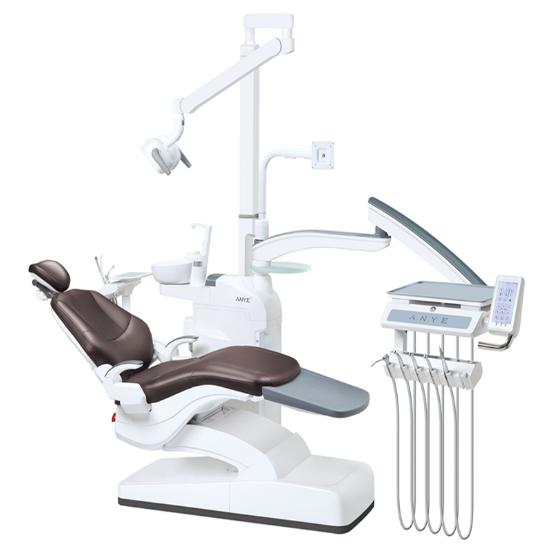How to Maintain Bacteria-Resistant Children Dental Units?
Maintaining bacteria-resistant dental units in pediatric dentistry is paramount. These units serve a crucial role in preventing infections and ensuring a safe environment for young patients. Inadequate maintenance can pose significant risks, making it vital to understand the nuances of proper upkeep.
Importance of Bacteria-Resistant Dental Units
These units integrate advanced technology to impede bacterial growth and contamination. Their design often incorporates materials like antimicrobial coatings, non-porous surfaces, and specialized filtration systems. Their role extends beyond hygiene; they provide a safe, sterile environment conducive to pediatric dental care, mitigating the spread of infections.
Maintenance Tips:
In this section, the author will give detailed instructions about maintenance.
Regular Cleaning Regimen:
●Daily: Thoroughly clean all surfaces with approved disinfectants, focusing on high-contact areas like chair arms and handles.
●Weekly: Remove and sanitize removable components such as trays, light handles, and brackets. Utilize manufacturer-recommended solutions to maintain integrity.
●Monthly: Perform a deep clean of the entire unit, including waterlines and filters, using specialized cleaning agents or flushing solutions.
●Weekly: Remove and sanitize removable components such as trays, light handles, and brackets. Utilize manufacturer-recommended solutions to maintain integrity.
●Monthly: Perform a deep clean of the entire unit, including waterlines and filters, using specialized cleaning agents or flushing solutions.
Inspect and Replace Components:
Conduct routine inspections to identify wear and tear. Replace components like filters, tubing, and valves according to the manufacturer's specified intervals or earlier if signs of deterioration are observed.
Prioritize regular maintenance of air-water syringes and handpieces, ensuring they function optimally and maintain sterility.
Prioritize regular maintenance of air-water syringes and handpieces, ensuring they function optimally and maintain sterility.
Follow the Manufacturer's Guidelines:
Strictly adhere to the manufacturer's instructions for cleaning and maintenance procedures. Use recommended cleaning agents and follow specified protocols for disinfection to ensure the unit's efficacy.
Sterilization Protocols:
Implement stringent sterilization protocols for instruments and tools. Utilize autoclaves or other approved methods to eliminate pathogens and prevent cross-contamination.
Environmental Controls:
Maintain a hygienic environment around the unit by regularly sanitizing surfaces, floors, and surrounding areas. Implement protocols for waste disposal to limit potential microbial exposure.
Regular Servicing and Calibration:
Schedule routine servicing by certified professionals to inspect and recalibrate the equipment. This ensures accurate performance and identifies potential issues before they escalate.
FAQs: What Makes A Dental Unit Bacteria-Resistant?
Bacteria-resistant dental units incorporate materials and technologies like antimicrobial coatings, non-porous surfaces, and specialized filtration systems. These elements hinder bacterial growth and help maintain a sterile environment.
FAQs: Why is it Crucial to Have Bacteria-Resistant Dental Units for Children?
Children are more susceptible to infections, making a sterile environment vital for their safety during dental procedures. Bacteria-resistant units reduce the risk of cross-contamination and ensure a hygienic setting for pediatric dental care.
FAQs: How Often Should A Bacteria-Resistant Dental Unit Be Cleaned?
Daily cleaning of high-contact surfaces and weekly sanitization of removable components are recommended. Additionally, monthly deep cleaning of the entire unit, including filters and waterlines, helps maintain optimal hygiene.
FAQs: What Cleaning Agents Should be Used for Bacteria-Resistant Dental Units?
Manufacturer-recommended cleaning agents or disinfectants should be used to ensure compatibility with the unit's materials. These solutions are specifically formulated to maintain the unit's integrity while effectively eliminating microbes.
FAQs: Can bacteria-resistant units completely eliminate the risk of infections in dental settings?
While bacteria-resistant units significantly reduce the risk of infections, maintaining proper hygiene protocols, sterilization of instruments, and adherence to infection control measures remain crucial for minimizing risks.
FAQs: How Often Should Components Like Filters and Tubing Be Replaced?
Components should be replaced according to the manufacturer's specified intervals. Routine inspections help identify signs of wear, and replacements may be necessary earlier if degradation is observed.
FAQs: Are There Specific Environmental Controls Recommended Around These Units?
Regular sanitation of surfaces, floors, and adjacent areas is important. Implementing waste disposal protocols and maintaining a clean, organized workspace around the unit minimizes the risk of microbial exposure.
Conclusion
Ensuring the longevity and effectiveness of bacteria-resistant dental units demands meticulous attention to maintenance. These practices not only extend the lifespan of the equipment but also uphold the safety and well-being of young patients by creating a sterile, infection-free environment.




Leave a comment